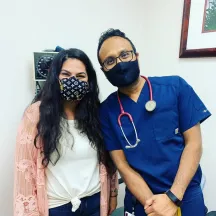Virtual colonoscopy
Computed tomographic colonography (virtual colonoscopy) is method colorectal cancer screening that uses X-rays and computers to take 2- or 3-D images of your colon and rectum.
The details
- Computer Tomographic (CT) Colonography, also known as virtual colonoscopy, is used to find polyps, colorectal cancer and other diseases of the large intestine through computerized technology.
- A small tube is placed in the anus and air is pumped into the colon to inflate the bowel. A special CT scan is then used to image the colon.
- Recent studies show virtual colonoscopies are very effective in identifying medium to large polyps but may miss small or flat polyps.
- Low-risk patients who cannot undergo a conventional colonoscopy may favor this less-invasive alternative.
Will my insurance cover it?
A number of major health insurers cover the procedure. However, because policies differ, check with your health insurance provider to confirm your options. Be aware that Medicare does not yet cover virtual colonoscopy.

The prep
Just like a conventional colonoscopy, the colon must be cleaned out prior to a virtual colonoscopy.
This means you will need to follow a clear liquid diet and do a full bowel prep before the test.
The pros & cons
Advantages
- Quicker than conventional colonoscopy
- Few complications
- No sedation
- Less invasive than conventional colonoscopy
- Can see inside a colon that is narrowed due to inflammation
Disadvantages
- Air distention of the bowel can be uncomfortable
- Dietary restrictions for one to three days prior
- Full bowel prep required
- Less effective in detection of smaller polyps and polyps
- Uses X-ray radiation
- If polyps are found, a conventional colonoscopy will be needed to remove them for biopsy
- Is not covered by Medicare as an initial screening test
- Not as widely available as conventional colonoscopy

Positive results
- Abnormal growths are detected in about one out of five people who undergo virtual colonoscopy.
- It’s also possible the CT scan will reveal something outside of the colon which could require additional testing.
- If your doctor detects an abnormal growth, you will need to have a conventional colonoscopy to remove it.
The procedure
This test is done in a room with a CT scanner.
- You may be asked to drink a contrast solution.
- During the procedure, you’ll be asked to lie on a table that is part of the CT scanner.
- Your doctor will insert a small, flexible tube into your anus.
- Air is pumped through this tube into the colon in order to expand it and provide better images.
- The table then slides into the CT scanner and a series of cross-sectional images of your colon are taken.
- You will likely have two scans: one while you are lying on your back and the other while you are on your stomach.
- The total time for the virtual colonoscopy is a mere 10 minutes
More about virtual colonoscopy
Virtual colonoscopy: a less invasive alternative?Top resources

Legislation introduced to address young-onset CRC
Explore the urgent need for the Colorectal Cancer Early Detection Act (HR 7714), legislation aimed at combating the rising incidence of colorectal cancer among younger adults through enhanced screening, education, and research.

Dak Prescott joins Alliance to ‘LEAD FROM BEHIND’
Initiative aims to reduce stigma and educate about screening choices, as the Colorectal Cancer Alliance launches a health equity fund to decrease disparities.

Act now to create a coverage pathway for future blood-based detection
On the horizon are blood tests that have shown the ability to detect a variety of cancers including colorectal and rare cancers. Though these tests are still in development and are not yet approved by the FDA, clinical trials have shown impressive results.





